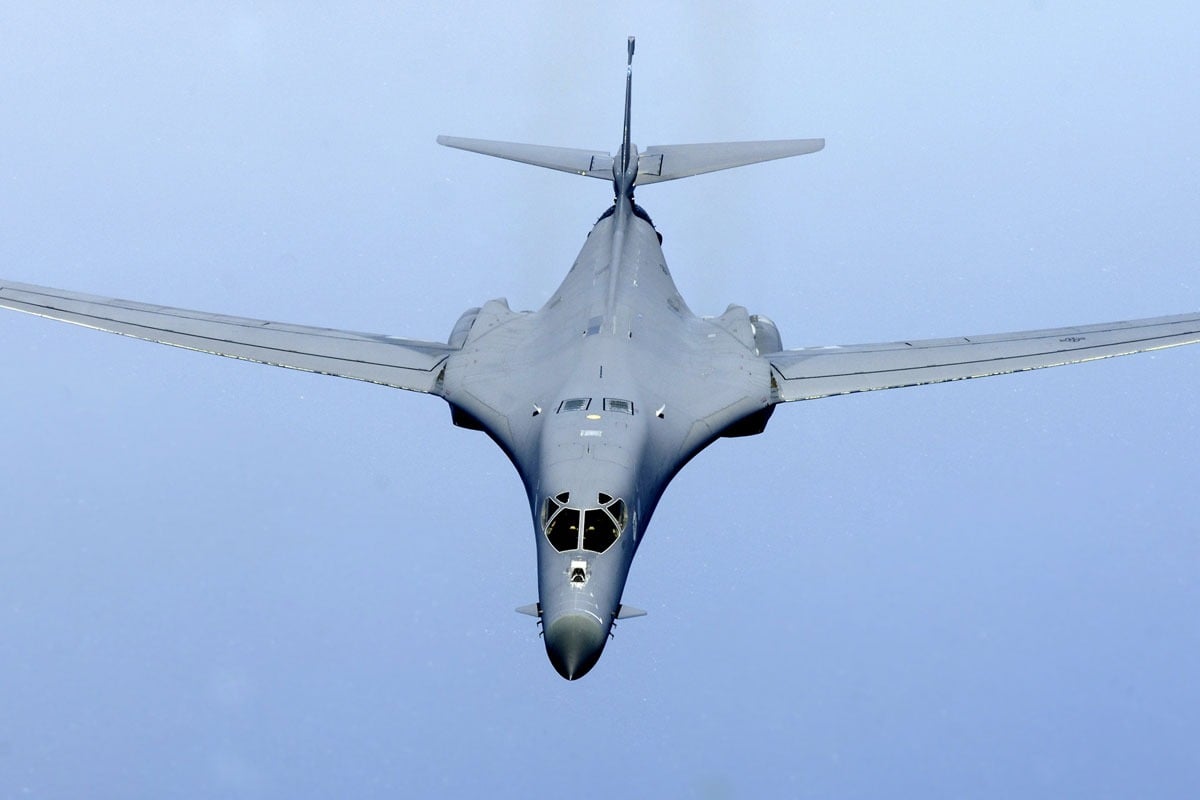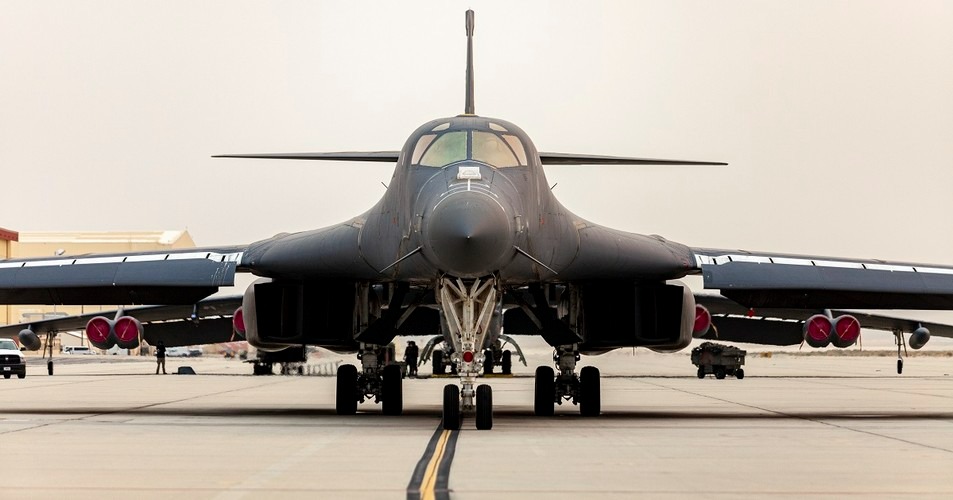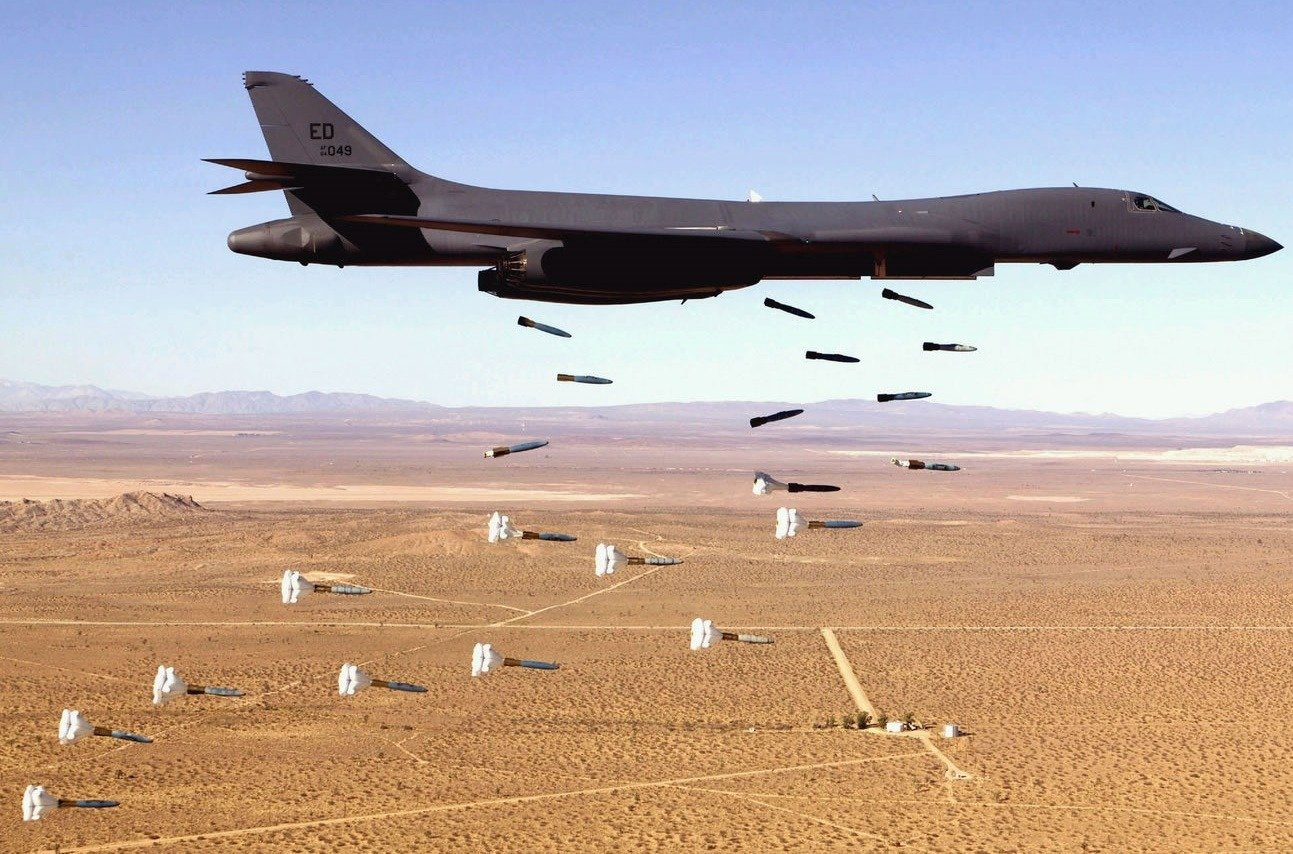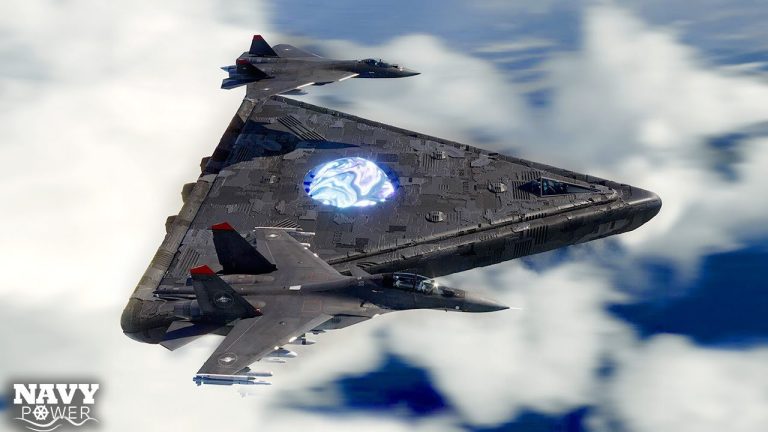B-1B Lancer is a strategic bomber of the United States Air Force, noted for its ability to carry a variety of weapons, including conventional bombs and nuclear bombs. Below are some highlights of the B-1B Lancer:

Aerodynamic Design: The B-1B Lancer has an aerodynamic design that helps reduce its radar detection capability, allowing it to carry out deep attack missions in enemy territory.
High weapons load capacity: The aircraft can carry up to 34,000 pounds (approximately 15,000 kg) of weapons, including precision-guided bombs, conventional bombs and nuclear bombs.
Speed and Range: The B-1B Lancer can fly at supersonic speeds (Mach 1.25) and has a range of up to 6,000 miles (approximately 9,700 km) without needing to refuel.
Engines: The aircraft is equipped with turbofan jet engines, allowing efficient and flexible operation in various conditions.
Mission Diversity: The B-1B can perform a variety of missions, from strategic strikes to fire support for ground forces, as well as participating in training and surveillance activities.

The B-1B Lancer is a crucial component of the U.S. military’s global strike capability, helping to maintain deterrence and protect national security.







